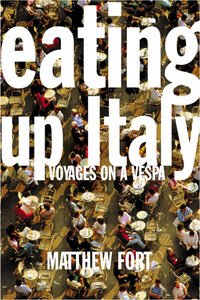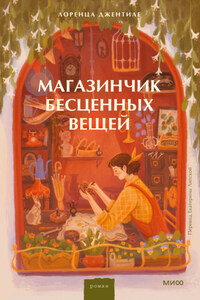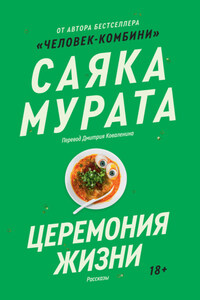Cover
Title Page
Dedication
Note
1 Whetting the Appetite
Melito di Porto Salvo – Reggio di Calabria
2 King Pig
Reggio di Calabria – Vibo Valentia – Pizzo – Pianapoli
3 Getting Stuffed
Pianapoli – Castrovillari – Diamante – Scalea – Maratea – Sapri – Sala Consilina – Naples
4 Turbulence, Tripe and Taralli
Naples
5 One for the Road, Again
Naples – Piedimonte Matese
6 Sweet Charms
Piedimonte Matese – Sulmona – Fara San Martino – Guardiagrele
7 Olive Branches and Potato Passions
Guardiagrele – Penne – Ascoli Piceno
8 Pulses from the Old Year
Ascoli Piceno – Serra de’ Conti – Portonovo – Ancona
9 ‘Sara Un Si Ameno Giorno Propizio Ai Viaggiator’
Ancona – Cervia – Comacchio
10 The Supreme Sausage
Comacchio – Ferrara – Mantua – Cremona
11 The Mozart of Mushrooms
Cremona – Casale Monferrato – Asti – Bra – Turin
12 Mixing Memory and Desire
Turin
Searchable Terms
Acknowledgements
Other books by Matthew Fort
Copyright
About the Publisher
MELITO DI PORTO SALVO – REGGIO DI CALABRIA
Crostino di pane di grano con pomodoro, peperoncino e origano
The biscuity gold slice of toast was heaped with tiny cubes of cardinal-red tomato, shiny with oil and juices, and flecked with dark green particles. The crostino was explosively crunchy, with a slightly malted flavour. The tomato was clean and sweet, its flavour sharpened by the exhilarating intensity of the dried oregano, the warmth of chilli rising up through fruit and herb.
MELITO DI PORTO SALVO – REGGIO DI CALABRIA
First came the antipasti: neonati, minuscule fish no bigger than a toothpick, fried to crisp little nuggets; a couple of slices of burly prosciutto di Calabria; fleshy, acrid black olives; and some chewy hanks of melanzane sott’olio, aubergines preserved in oil; tomato, chilli and oregano, on crostini. The biscuity gold slice of toast was heaped with tiny cubes of cardinal-red tomato, shiny with oil and juices, and flecked with dark green particles. The crostino was explosively crunchy, with a slightly malted flavour. The tomato was clean and sweet, its flavour sharpened by the exhilarating intensity of the dried oregano, the warmth of chilli rising up through fruit and herb.
Next there was the primo piatto, tagliolini with tiny artichokes and fennel braised to an amber, emollient, vegetal softness. It had a sensuous, sybaritic luxury, slithering down my throat. Another plate, the secondo piatto: a random selection of very fresh grilled baby cuttlefish and fat prawns, their caramelised, marine sweetness cut by the sharp acidity of lemon juice. Finally a salty, sharp young pecorino and a couple of early nectarines, full of juicy sweetness that trickled down my chin.
An agreeable sensation of repletion suffused my being from the tips of my toes to the remote corners of my brain. This was what I had come for. Each mouthful was a reminder of the essential plainness, and grace, of Italian food. There were no extraneous sauces, no distracting garnishes, no mint sprigs or dashes of fancy oils. The flavours were clean and clear. The beauty of each dish lay in the quality of the ingredients, and in the understanding with which they were cooked. I mopped my chin and finished off the last of the red wine, which tasted of chemicals and damsons. Lunch was done. There was time for an espresso.
‘I think you need a glass of bergamino as well, signore,’ said the waiter.
‘Bergamino?’
‘The liquore from the bergamotto.’
In my ignorance I had always assumed that oil of bergamot, a staple for a thousand perfumes, eau de toilettes and aftershave lotions, not to mention the fragrant, vaguely medicinal liquore, came from a flower. Indeed, the fragrance of the flower, la zagara, filled the blustery breezes here in Melito di Porto Salvo, the southernmost point of the southernmost coast of mainland Italy. But it was the large, rounded, lemon-yellow fruit that was the basis of a substantial industry in the area, with a consorzio del bergamotto based in nearby Reggio di Calabria and a tightly controlled group of producers.
Prominent among them was Signor Enzo Familiare, whom I met later that afternoon. He was a short, handsome man of around seventy, I guessed, with the lively manner of an elderly leprechaun. We wandered among the ranks of immaculately maintained trees in his groves tucked away off the main road, just outside Melito. As he pottered from one tree to another, he caressed their trunks or let the leaves trail through his fingers, speaking about them all the time with the fond indulgence of a kindly uncle. Words gushed from him. I watched his lips. I listened to his voice. I understood perhaps one quarter of what he was telling me.








